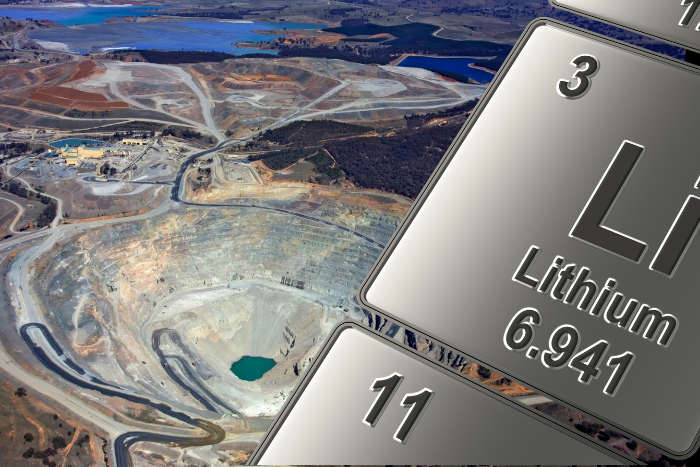The initiative will encompass all stages of the value chain, including mineral exploration, mining, beneficiation, processing, and recovery from end-of-life products
The government has approved the launch of the National Critical Mineral Mission (NCMM) with an expenditure of ₹16,300 crore and expected investment of ₹18,000 crore by Public Sector Undertakings (PSUs), etc. The NCMM will encompass all stages of the value chain, including mineral exploration, mining, beneficiation, processing, and recovery from end-of-life products. The mission will intensify the exploration of critical minerals within the country and in its offshore areas. It aims to create a fast track regulatory approval process for critical mineral mining projects.
Given the indispensable role of critical minerals in high-tech industries, clean energy and clean mobility solutions, especially in the current geopolitical context, the announcement is significant. “There is a need to establish an effective framework for India’s self-reliance in the critical mineral sector,” the government statement said.
The statement also said that Finance Minister Nirmala Sitharaman had previously announced the setting up of the Critical Mineral Mission in the Union Budget for 2024-25 on 23rd July 2024.
Aiming for self sufficiency
Critical minerals play an increasingly important role in global energy security as the world moves towards sustainable energy sources like renewable energy and e-mobility. Reducing the dependence on other countries for these minerals and exempting them from duties will make them cheaper, thus helping EV makers drive down prices of these vehicles and increase the momentum of mass adoption.
The mission will provide financial incentives for critical mineral exploration and encourage the recovery of these minerals from overburden and tailings. The mission seeks to promote trade with resource-rich nations and persuade Indian PSUs and private sector businesses to purchase critical mineral assets overseas. Additionally, it suggests building up a national reserve of vital minerals.
The statement said that “the mission includes provisions for setting up of mineral processing parks and supporting the recycling of critical minerals. It will also promote research in critical mineral technologies and proposes setting up a Centre of Excellence on Critical Minerals.”
It further added that adopting a “whole-of-government approach, the Mission will work closely with relevant ministries, PSUs, private companies, and research institutions to achieve its objectives.”
Monopoly over critical minerals
According to an earlier prediction by the International Energy Agency (IEA), the global demand for lithium will rise 40-fold by 2040 — along with a 20-25 time growth in demand for graphite, cobalt and nickel, given the push for adoption of EVs in various global markets. Therefore, like other governments worldwide, the Indian government too has put these minerals high on its priority list, given the concentration of their reserves in very few geographies on earth.
The “lithium triangle” of Chile, Argentina and the salt flats of Bolivia holds 56% of all known lithium deposits, while 7.9% falls within China. Cobalt is another highly sought-after metal that’s used in EV batteries, and 70% of it is mined by the Democratic Republic of Congo. EV batteries also depend on a combination of several rare earth metals, such as ruthenium, chromium and iridium.
However, China at the moment accounts for around 70% of the world’s rare earth minerals supplies, while North Korea is reported to have $10 trillion worth of minerals and two thirds of the world’s rare earths. India has been consistently upping its game to gain access to these minerals and thwart its dependence on China.
India became the only developing country in the coveted Mineral Security Partnership (MSP) – a US-led alliance of 14 developed economies aimed at ensuring uninterrupted supply of critical minerals and rare earth essential for sustained economic growth.
Policy support in India
The Mines and Minerals Development and Regulation Act, 1957 (MMDR Act) was amended in 2023 to increase exploration and mining of critical minerals. Consequently, the Ministry of Mines has auctioned 24 blocks of strategic minerals. Further, Geological Survey of India (GSI) has undertaken 368 exploration projects for critical minerals over the past three years, with 195 projects currently underway in FS 2024-25.
Further, for FY 2025-26, GSI is going to take up 227 projects for various critical minerals.
To foster innovation, the Ministry launched the Science and Technology – Promotion of Research and Innovation in Start-ups and MSMEs (S&T PRISM) program in 2023, funding start-ups and MSMEs to bridge the gap between R&D and commercialization.
Moreover, the Khanij Bidesh India Ltd (KABIL), a joint venture of the Ministry of Mines, has acquired an area of about 15,703 Ha in the Catamarca province of Argentina, for exploring and mining of lithium. This will increase the availability of critical minerals in the country and will encourage the industry to set up processing facilities in India.
About The Author
You may also like
Ola Cuts FY26 Revenue Forecast as Focus Shift to Profitability
COP30 Kicks Off With Hard Talks on Money, Adaptation and Global South Leadership
India Launched First E-Truck With Swappable Batteries
COP30 should be the COP of adaptation, says environment minister Bhupendra Yadav
BYD and Tesla’s new battleground for EVs is India

